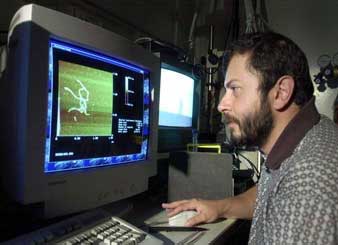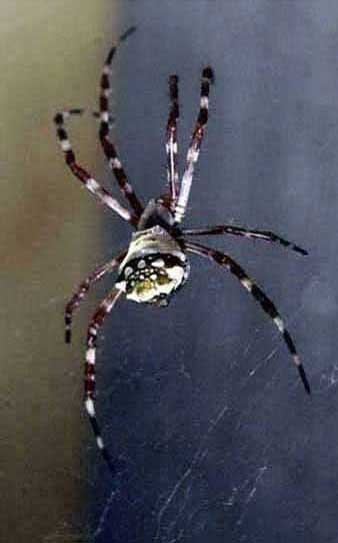
A group of scientists at UCSB say an itsy-bitsy creature will one day revolutionize industries, from construction to apparel and even the military.
For this reason, the biologists in Broida Hall hold spiders in high esteem. They feed them crickets and spray their webs with water every day, providing the predators with a constant drinking supply. They also don't kill any eight-legged friends they find at home. It's a thank-you for producing silk in webs that, for their size, are stronger than steel and as flexible as rubber.These two properties combined in one material may one day make the protein in spider webs valuable on a larger scale for, say, strengthening buildings or even weaving strong, stretchy spider silk pants, say the experts. It's also biodegradable and wouldn't require an environmentally harmful manufacturing process.
Experts are aware that people unfamiliar with the benefits of spider silk might be surprised by their research and goals.
"It's a little off the wall, no question about that," said Stephen Fossey
of the U.S. Army Natick Research and Development Center in Massachusetts,
who works with UCSB on the project. "But it's a legitimate thing
to do."

Practical applications are probably decades away, said Emin Oroudjev, a researcher on the UCSB team. Unlike silk worms, spiders aren't a viable crop because they are aggressive and can't be stored in close quarters where they might kill or eat each other. For now, scientists at UCSB and in other projects around the world are researching webs in an attempt to manufacture imitation spider silk.
"Spiders are very hot right now," said Mr. Oroudjev, who has developed an attachment to a pair he keeps in a cage in his lab.
He assumes that science will follow a natural course, so that other researchers will build on the UCSB findings and eventually contribute to the marketplace.
"We redeployed our money toward other programs, so we're not working with it extensively. But because it is such an interesting material, we're keeping our eye on it because it may have applications for personal protection or medical uses," said Mr. Fossey.
The UCSB spider researchers are working with the Army, which wants to use the material for protective apparel during battle. The Army grows proteins in bacteria in an attempt to mimic spider silk fibers, and UCSB researchers study its construction under a powerful microscope to see how it can be improved. The group is waiting for the Army to produce a new protein fiber, which they'll examine and test to see how it rates against the real thing.
The UCSB researchers have already made two key findings, with an earlier prototype of imitation spider silk protein, which comes in individual molecules rather than in a fiber. They published the news this spring in the proceedings of the National Academy of Sciences. The coauthors include Mr. Oroudjev, UCSB professor Helen Hansma , who oversees the lab and worked with him on the project, and Army scientists.

They learned how the proteins connect by studying them under a microscope. The individual protein molecules actually form strands on their own when they are mixed together.
"By observing this formation, we know we can form fibers," said Mr. Oroudjev. "It's probably an indication that we're moving in the right direction."
The scientists also stretched spider web protein molecules under the microscope and learned that the silk slowly bounces back to its original form. The more they learn about how the molecules connect, the better they will be able to replicate it.
At least one private company has already sprung up to use spider silk and has enticed the Army to work with it. Nexia in Canada has genetically engineered goats to produce spider silk proteins in their mammary glands. The firm claims the procedure has "proven successful in producing the most authentic, man-made spider silk to date."
UCSB scientists say there's still plenty of work to be done to improve understanding and production of imitation spider silk.
"Hopefully it will be of use to somebody," said Ms. Hansma.
return to UCSB Physics home page
updated August 1, 2002.
development@physics.ucsb.edu